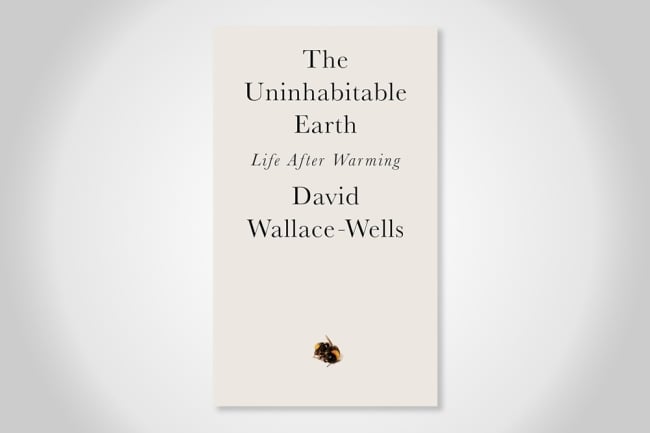You have /5 articles left.
Sign up for a free account or log in.

Tim Duggan Books
The Uninhabitable Earth: Life After Warming by David Wallace-Wells
Published in February 2019.
The Uninhabitable Earth is among the only climate-emergency books I’ve read (and reviewed in this space) published pre-pandemic. As we learned from the COVID pandemic, adapting to even the most challenging circumstances is possible.
Economic life did not cease with lockdowns but rather morphed toward near-universal remote professional work. Higher education, perhaps more than any other in-person and place-based industry, proved resilient and flexible.
Would Wallace-Wells have titled his climate-emergency book The Uninhabitable Earth if it had been written after the pandemic? From the perspective of 2024, it seems clear that societies will adapt—just as they did during the pandemic—to our coming future of flooding, dangerous heat, and extreme weather.
If you read enough science-based climate-emergency books, you inevitably start to place each book on a continuum ranging from “we’re probably screwed, but there is still time to do something” to “we’re screwed no matter what.” The Uninhabitable Earth falls firmly into the latter category.
As a post-pandemic reader, I have more faith in our ability to adapt than a pre-2020 climate-emergency author (or reader) might have allowed. Still, it is helpful to be reminded—as the reader of The Uninhabitable Earth is throughout the book—how terrifying the weirdness of climate-induced weather can be.
When it comes to rising waters, spreading wildfires, torrential downpours, and ever-hotter days and nights, our brains are wired to expect incremental change. The problem is that from here on out, the climate will change at something closer to an exponential than linear rate.
Weather weirdness will feel like “a gradual rather than all-at-once” transition. One day, the heat will be manageable, the flooding will be controlled, and the fires will be elsewhere. And, then, everything will change.
For the reader of Universities on Fire and The Uninhabitable Earth, the question is—how will our colleges and universities adapt to a climate emergency? Or, a COVID pandemic–informed re-working of this question would be to ask, what might we lose in adapting?
COVID has changed higher education in ways we still try to wrap our minds around. Academic knowledge work is now hybrid. Very few professors and professional staff are on campus five days a week, eight hours a day. The campus-as-a-workplace gift of the pandemic has been flexibility.
But that academic work flexibility—a benefit that none of us would want to give up—comes at a cost. The work of the academic professional staff is less social when most meetings are now held over Zoom. There are fewer unscheduled conversations between faculty within and across academic disciplines when more research and writing is done from home.
Climate change will only accelerate the pandemic-driven trends that Eddie Maloney and I have described in The Low-Density University. Extreme and unpredictable weather will be another reason why much of the work of the university that once happened only on campus will occur wherever the faculty and staff (and increasingly students) are living. We can only guess how many “on-campus” days will be shifted to remote teaching, learning, and work as heat, flooding, hurricanes and fire encroach on our campuses.
If we want our campuses to remain habitable as the climate warms, then we will need to begin the work today of rethinking what our campuses are for. Even if the most extreme impacts of warming, as described in The Uninhabitable Earth, end up being more gradual and moderate than the book argues, failing to evolve our campus designs is likely not an option. How we change higher education’s built environment in the face of our climate emergency is a conversation we’ve only begun to start having.
What climate emergency books do you recommend?
What are you reading?




